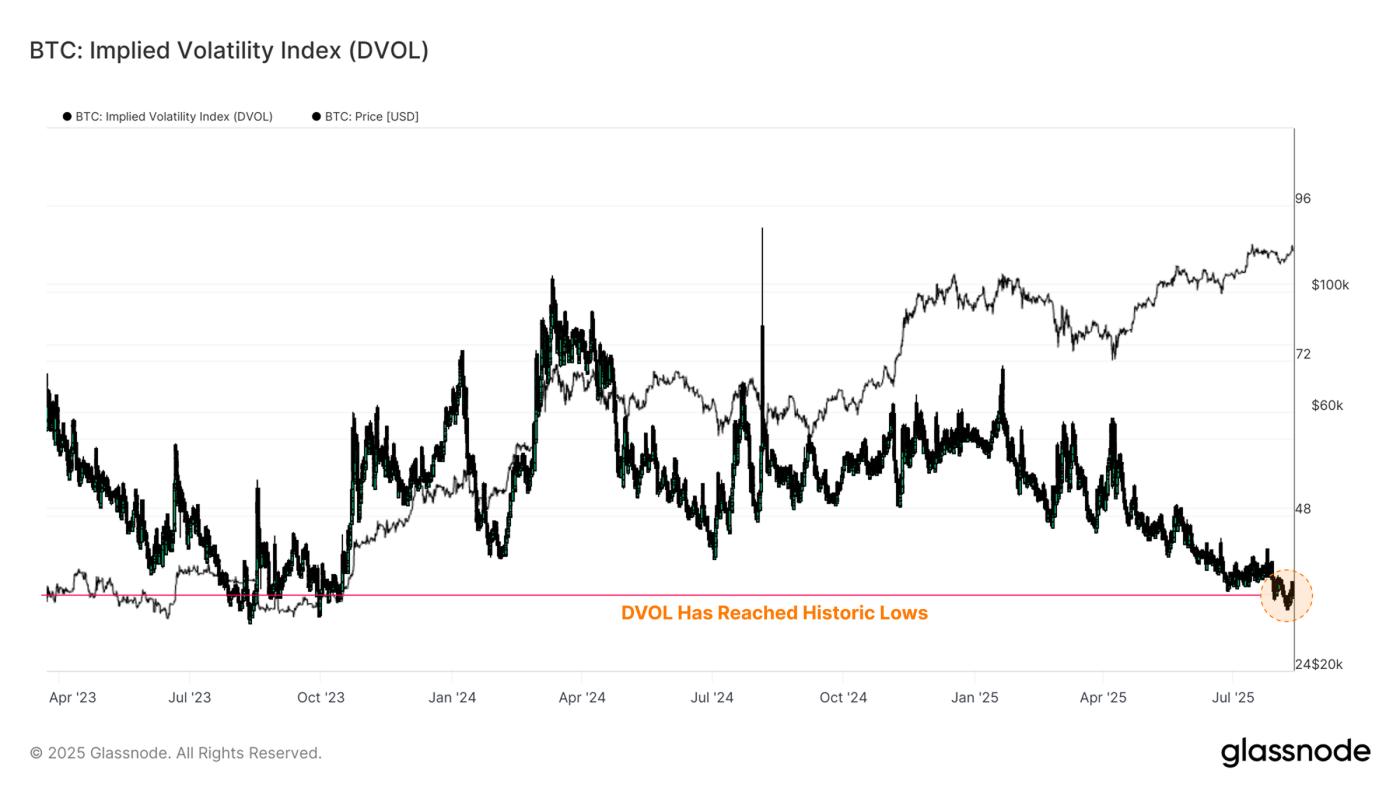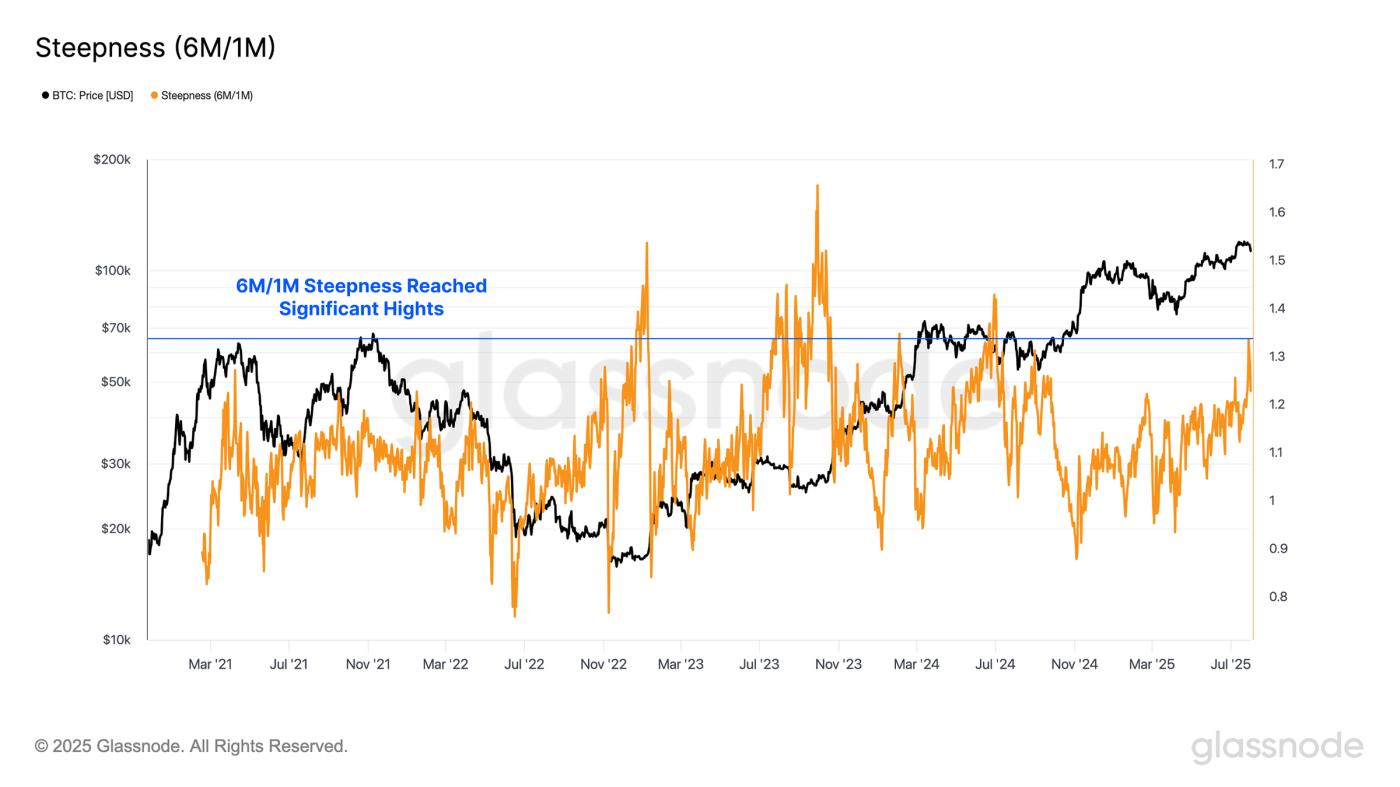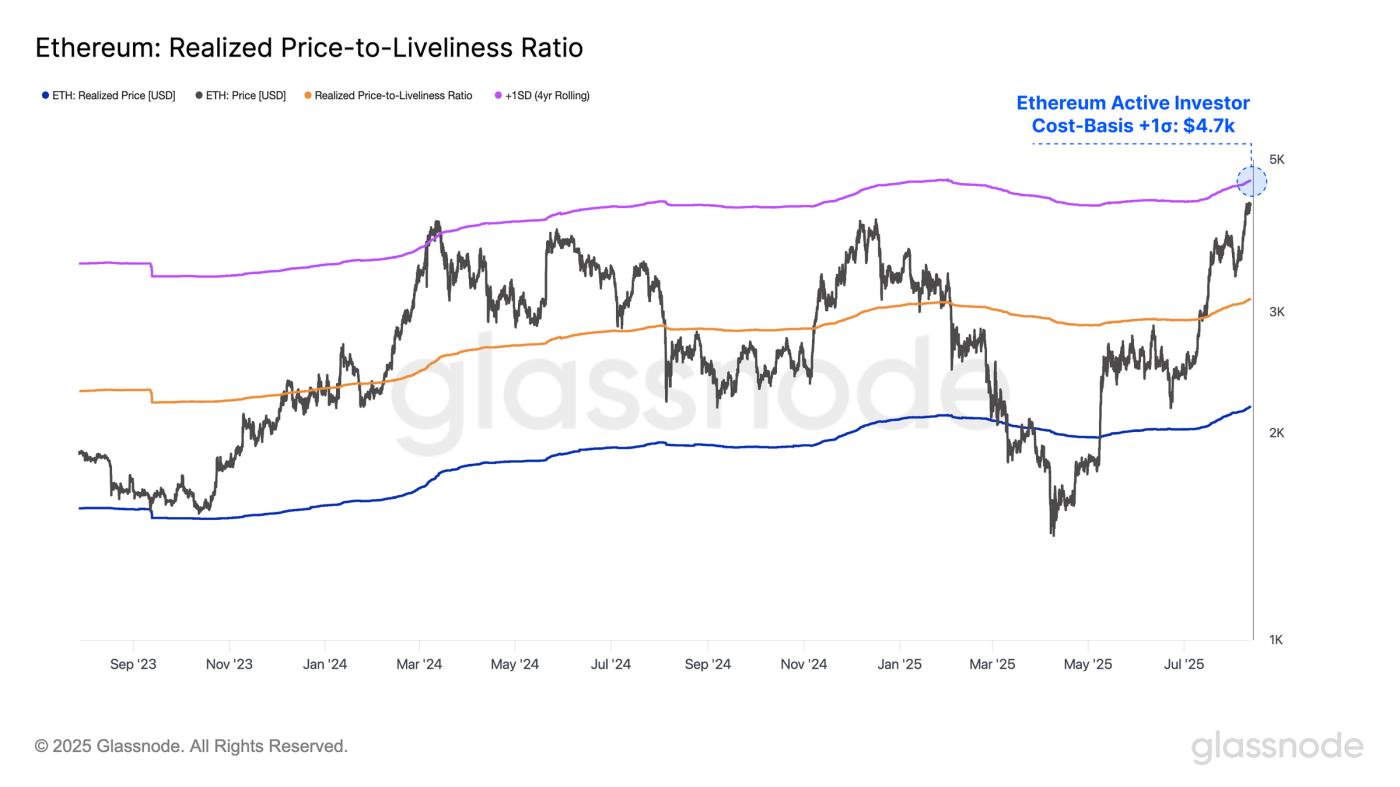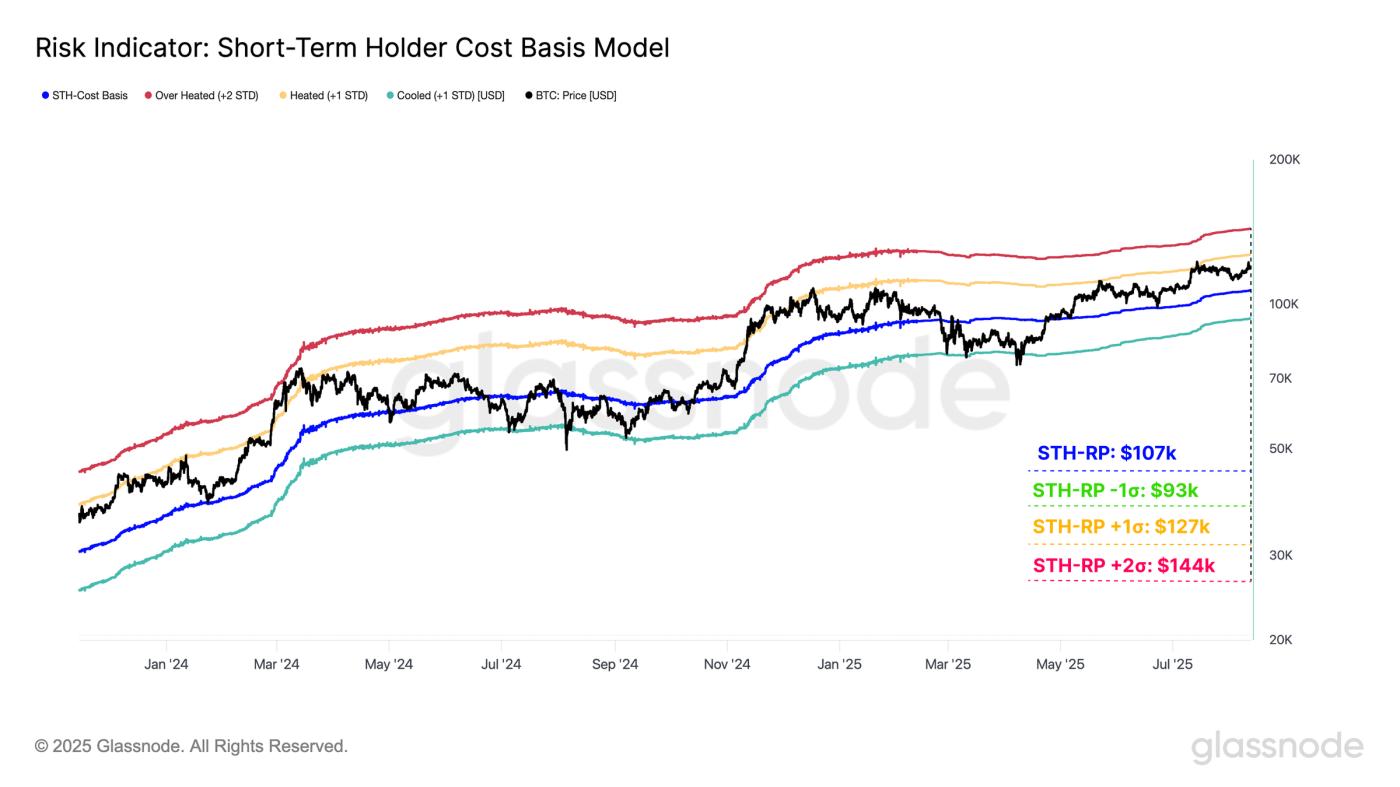The two key resistance levels of Ethereum at $4,700 and Bitcoin at $127,000 will become the watershed for subsequent trends, with a breakthrough potentially ushering in a new round of increases, while being blocked may trigger a deep leverage-driven pullback.
Written by: UkuriaOC, CryptoVizArt, glassnode
Translated by: AididiaoJP, Foresight News
Ethereum's price continues to strengthen, moving towards its historical high point, while Bitcoin is consolidating below its peak. However, the surge in open interest for mainstream Altcoins, coupled with exceptionally low volatility expectations for Bitcoin, has laid the foundation for increased volatility in the digital asset market.
Summary
Ethereum's upward momentum continues to accelerate, with its price reaching $4,600, the highest level since December 2021, only about 5% lower than its previous all-time high. However, increasing speculative activity in this leading Altcoin has driven the total open interest of mainstream Altcoins to a record $47 billion. This accumulation of leverage creates a more volatile market background, with price impacts becoming increasingly reflexive.
(The rest of the translation follows the same professional and precise approach, maintaining the technical terminology and style of the original text.)Additionally, we can further verify the above observations through Deribit's DVOL index. This index is a 30-day implied volatility indicator based on options data from all strike prices, not just at-the-money options. Similar to the VIX index in the stock market, it provides a broad perspective on market sentiment and expected price volatility, helping traders assess risks and identify periods of increased speculation or uncertainty.
The current DVOL reading is at a historical low, with only 2.6% of trading days having values lower than the current level. This level typically reflects market complacency and insufficient hedging for significant fluctuations. Although this situation may persist, the market will be susceptible to sudden volatility if a catalyst emerges, as demonstrated by the violent and disorderly price movements during past cycles of rapid risk repricing.

Furthermore, we can track the 6-month/1-month implied volatility ratio to assess changes in market volatility expectations over time. Variations in this ratio can reveal whether traders believe risks are concentrated in the near or distant future, helping to identify sentiment changes and the expected timing of market stress or exuberance.
Currently, the 6-month/1-month implied volatility ratio is at a high level, with only 3.2% of trading days having readings higher than the current level. This indicates that options traders perceive long-term uncertainty to be significantly higher than short-term, suggesting a substantial increase in volatility expectations for the next two quarters.

Market Navigation
To assess potential upside targets for Ethereum's current rally, a useful reference point is the +1 standard deviation level of its active realized price, which typically marks the beginning of selling pressure accumulation. Currently, this threshold is $4,700 and may represent an overheated area under current market conditions.
This level has historical significance, serving as a strong resistance level during the March 2024 rally and multiple times during the 2020-2021 bull market cycle. In the past, when Ethereum broke through this range, it was usually accompanied by heightened investor sentiment and a fragile market structure.
Given these dynamics, the $4,700 price point is a critical resistance level that requires close attention. A decisive breakthrough could signal the market entering a more speculative phase, but it could also increase the risk of a sharp pullback if sentiment reverses.

In contrast, for Bitcoin, we can evaluate the Short-Term Holder (STH) cost basis, which represents the average purchase price for new market participants. Historically, this key price level marks the boundary between local bull and bear markets. By applying standard deviation intervals, we can assess whether the market is overheated or overcooled.
From these pricing perspectives, $127,000 becomes a critical level to watch closely. If prices continue to rise, the market's reaction to this level will be crucial. Moreover, if Bitcoin decisively breaks through $127,000, it may target the $144,000 area, where the +2σ interval converges with major resistance, potentially triggering a sharp increase in selling pressure.

Summary and Conclusion
The market is currently in a sensitive stage of high speculation and low volatility, requiring caution against short-term market shifts. The digital asset market currently shows polarization: Ethereum is strongly rising, approaching historical highs and driving Altcoin rallies, but with open interest surging to $47 billion, indicating leverage accumulation and increased market fragility; Bitcoin is consolidating at high levels, with robust on-chain indicators, but options market implied volatility is at a multi-year low, suggesting potential for violent volatility.
The strong performance of digital assets continues, with Ethereum surging to $4,600, its highest level since December 2021, currently only 5% below its all-time high, while Bitcoin's momentum remains strongly supported by robust on-chain fundamentals.
The strong Altcoin price performance has driven a surge in open interest for mainstream Altcoins, reaching a record $47 billion, increasing the possibility of significant price volatility. In contrast, the Bitcoin options market remains priced for a low volatility environment, with implied volatility at multi-year lows, a setup that historically often signals a sudden expansion of actual volatility.
The two major cryptocurrencies are currently approaching historically important resistance levels: Ethereum at the +1σ level of active realized price at $4,700, and Bitcoin at the +1σ level of Short-Term Holder cost basis at $127,000. Price developments near these thresholds will be critical, determining whether the market will advance towards higher cycle targets or face a sharp leverage-driven pullback.








